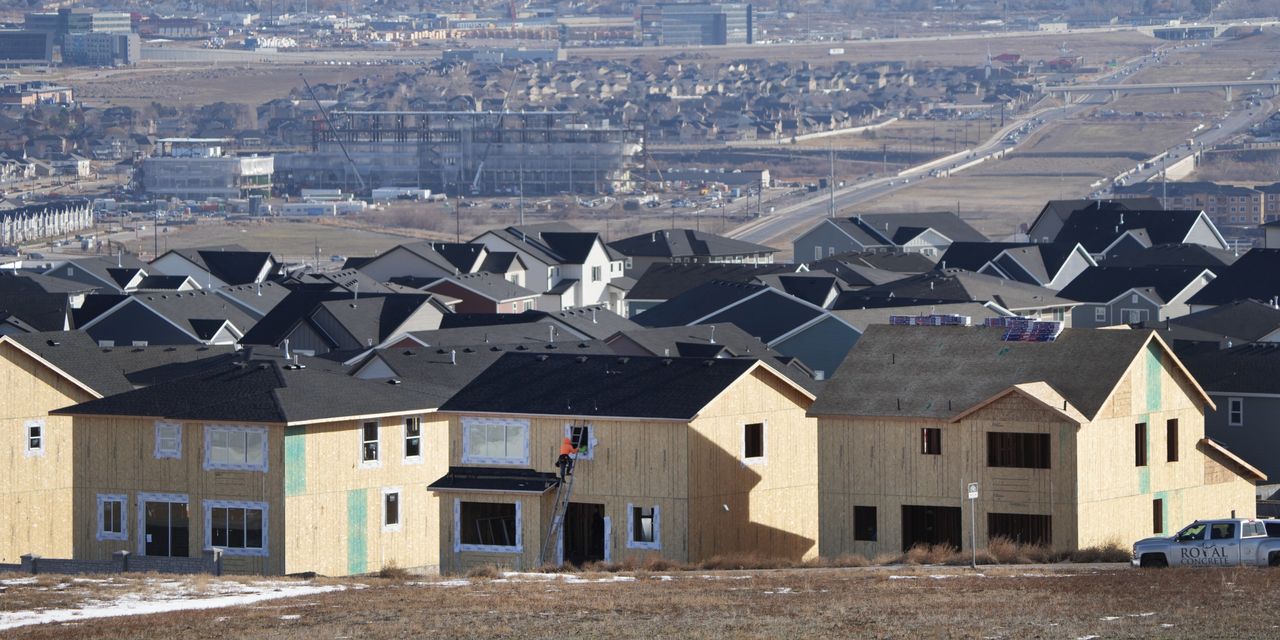
This should be a great year for U.S. home builders. Convincing investors of that might take time.
Home building ended 2021 on a strong note; the Commerce Department on Wednesday reported that construction was started on a seasonally adjusted 1.7 million homes, at an annual rate, in December, up from November’s 1.68 million. In all of 2021, 1.6 million homes were started, marking the biggest year for starts since 2006.
That strength looks as if it has carried over to the beginning of this year. Permits to build 1.87 million homes were issued last month, at a seasonally adjusted annual rate, versus 1.72 million in November. By now, ground has been broken on many of those projects.
Separately, the National Association of Home Builders on Tuesday said its measure of builder sentiment dipped slightly this month, to 83 from 84 in December. That is still a strong reading; anything over 50 indicates more builders judge the housing environment as good than bad. Even in the boom of the early 2000s, the index didn’t get as strong as it is now. A subindex of visits to homes by prospective buyers also eased only slightly, which is notable considering how the rise of the Omicron coronavirus variant might have led some people to postpone looking at homes.
Also, last week builder KB Home reported results for its fiscal fourth quarter ended in November that came in well ahead of analyst estimates and, perhaps more important, provided a strong outlook for its current fiscal year. Notably, the company said the average selling price of its homes would be $480,000 to $490,000 compared with $422,700 last year, and that its profit margin would expand significantly.
It all sounds very rosy, but any optimism among investors on home builders probably is being tempered by two related concerns. The first is home prices, which seem very high. As of November, the median selling price for a new home was $416,900, according to the Commerce Department, which compared with $331,800 in February 2020, before the pandemic struck. Rising material and labor costs are part of why prices have gone up so much, but there is still the question of how high a price people will be able to afford in the year ahead.
Which brings up the second concern: interest rates. The Federal Reserve might begin raising its target range on overnight rates as soon as March, and expectations that monetary policy will be tighter in the future have begun sending longer-term interest rates higher. Buying a house at a high price is a lot easier when rates are extremely low than when they aren’t.
Even with those price and interest-rate headwinds, home builders might still be able to do very well. In the years following the housing bust, home building slowed dramatically. Now the limited supply of available homes is coming up against very heavy demand. The pandemic helped bring back Americans’ taste for homeownership, and with the millennial generation settling down and a strong job market boosting incomes, the backdrop for housing could remain very favorable.
But investors might need to actually see housing do well in the face of rising rates before they believe that. Home builders’ results could outshine their share prices until they do.
Write to Justin Lahart at [email protected]
Copyright ©2022 Dow Jones & Company, Inc. All Rights Reserved. 87990cbe856818d5eddac44c7b1cdeb8
Appeared in the January 20, 2022, print edition as ‘Home Builders’ Future Looks Rosy.’








